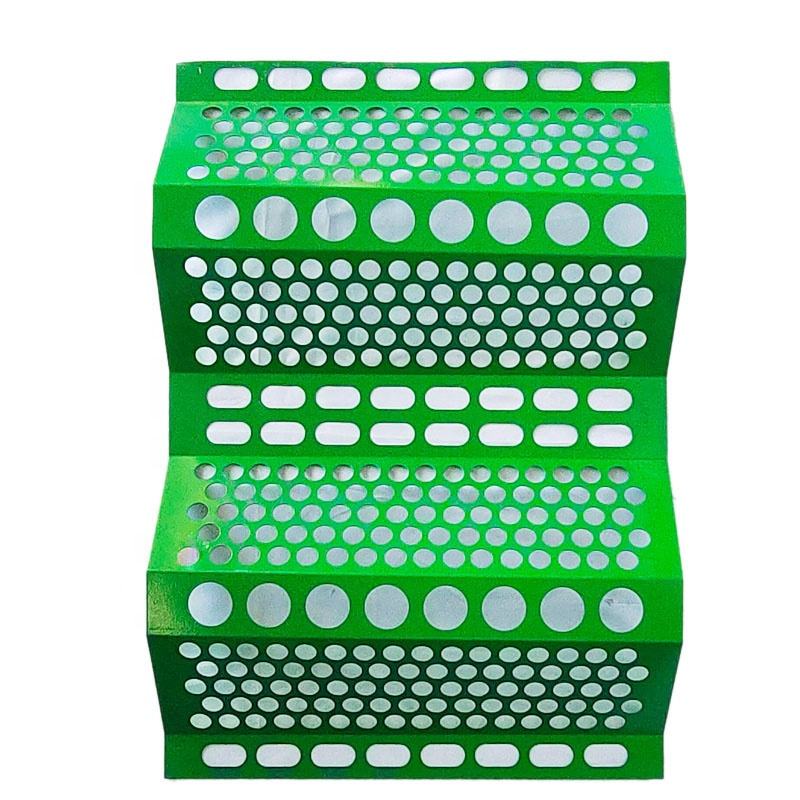Expanded Metal Mesh for Plastering Enhancing Durability and Stability
Expanded metal mesh has become an essential component in the field of construction, particularly for plastering applications. Its unique structure and numerous benefits make it an ideal choice for reinforcing plaster in various building projects. This article will explore the features, benefits, and practical applications of expanded metal mesh, focusing on its role in plastering.
What is Expanded Metal Mesh?
Expanded metal mesh is created by cutting and stretching a sheet of metal, forming a series of interconnected diamond-shaped openings. This process leaves the material intact, maintaining its strength while creating a lightweight, versatile mesh. The mesh is typically made from materials such as aluminum, steel, or stainless steel, each chosen for its specific properties and suitability for different environments.
Benefits of Using Expanded Metal Mesh for Plastering
1. Enhanced Strength and Durability One of the primary advantages of using expanded metal mesh in plastering is its ability to provide added strength and stability. When applied to walls or ceilings, it creates a strong substrate that can withstand the weight of plaster. This is especially important for thicker applications or in areas that experience vibrations or movement.
2. Improved Crack Resistance Cracking is a common issue with plaster applications, often resulting from shifts in the underlying structure or changes in temperature and humidity. The incorporation of expanded metal mesh into the plastering process helps distribute stress evenly across the surface, reducing the likelihood of cracks forming. This feature ensures that plaster finishes remain smooth and visually appealing over time.
3. Enhanced Bonding The diamond-shaped openings in expanded metal mesh allow plaster to penetrate and bond effectively with the mesh itself. This mechanical interlocking provides a stronger connection between the plaster and the underlying surface, minimizing the risk of delamination or peeling.
expanded metal mesh for plastering

4. Lightweight and Easy to Handle Despite its strength, expanded metal mesh is relatively lightweight, making it easy to transport and handle during installation. This ease of use can lead to faster application times, allowing for a more efficient workflow on construction sites.
5. Versatile Applications Expanded metal mesh is suitable for various plastering projects, including interior and exterior walls, ceilings, and even curved surfaces. Its adaptability allows contractors to use it in a wide range of construction scenarios, from residential homes to commercial buildings.
Applications in Plastering
In plastering applications, expanded metal mesh can be utilized in several ways. It is commonly employed as a lath material, providing an effective substrate for cement plaster and stucco finishes. The mesh can be installed over wooden or metal framing, offering flexibility for various design layouts.
Moreover, expanded metal mesh is used in the repair and restoration of existing plaster surfaces. By reinforcing fragile or damaged plaster with mesh before applying new layers, contractors can significantly extend the life of the repair work. This method is particularly valuable in heritage restorations where preserving original materials is crucial.
Conclusion
Expanded metal mesh represents a game-changing innovation in the plastering industry. Its combination of strength, durability, and versatility makes it an indispensable tool for contractors and builders. By enhancing plastering applications, expanded metal mesh not only improves the structural integrity of walls and ceilings but also ensures a long-lasting, aesthetically pleasing finish. As construction practices evolve, the adoption of expanded metal mesh will undoubtedly continue to grow, setting new standards for quality and performance in plastering.
-
Turn Down the Noise: The Future of Highway Sound Barriers
NewsApr.09,2025
-
Silence the Sound: The Power of Highway Noise Barriers
NewsApr.09,2025
-
Reduce Road Noise Effectively with Highway Noise Barriers
NewsApr.09,2025
-
Noise-Free Living: How Highway Barriers Make a Difference
NewsApr.09,2025
-
Engineered for Silence: Highway Noise Barriers for Every Road
NewsApr.09,2025
-
Effective Noise Control: Highway Barriers for a Quieter Tomorrow
NewsApr.09,2025
Subscribe now!
Stay up to date with the latest on Fry Steeland industry news.

